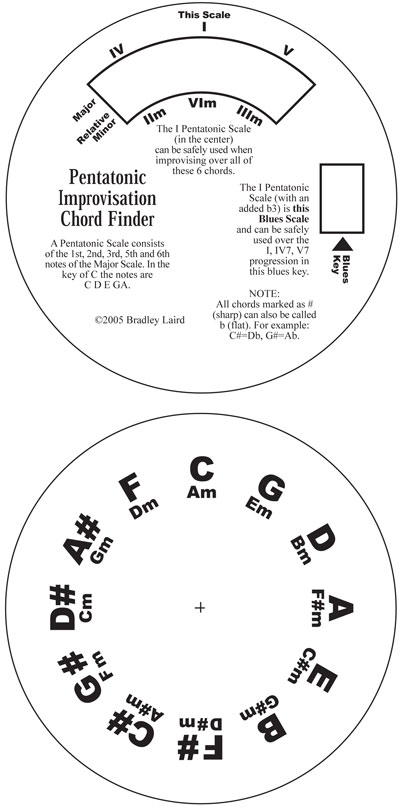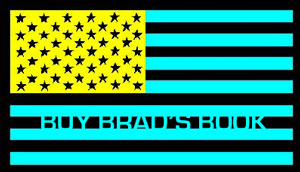|
|
Don't Suck! Use My Pentatonic Chord Finder
by Bradley Laird A few years ago when I was working on my book Mandolin Master Class, I had a couple of students who were having a little trouble quickly grasping exactly HOW to choose which pentatonic scale to "employ" when soloing. Master Class does a very good job of explaining this so I am not going to get into the particulars here. However, I will say this about "the Pentatonic Fake-Out" method: It works. It can get you out of a jam when you get a little lost. It can get you into a jam when you are a little lost. (The first jam referring to, of course, that feeling of not knowing what to play in the middle of your improvisation. The second jam I refer to are real jam sessions!) If you wait around until you know everything you need to know to play perfectly you will be sitting home when others are out jamming and having a great time. If you have read my book Mandolin Master Class you already know all about applying pentatonic scales over various chord progressions. If you haven't read my book here is the quick and dirty explananation: The major pentatonic scale (5 simple notes) can be "safely" used to solo over all of the chords "in a key" without playing any notes which totally suck. You know the notes I am talking about. Just get somebody to play a chord on a guitar and stay on that chord and start playing ALL of the notes on your instrument. You will quickly find that most notes sound pretty good, some OK, some marginal, and some totally suck. In one sense, the art of improvisation is playing a lot of notes, very quickly, without thinking too much, and making very few of them suck. Now that I have expended that verbosity, let me me describe a little gizmo I invented to simplify the finding of pentatonic scales for improvising. Here is a small version of the device:
The Gizmo It's an "arts and craftsy" little project you can make. Click Here to download a nice, FREE full-sized PDF file of the thing. Print out the page, preferably on some card stock or heavier paper, and cut out the two circles. Then, using a pin or something, punch a hole through the center of both circles. Next, grab a razor blade, an X-acto knife, or carefully chew out the two "windows" in the upper circle. One opening is shaped like an arc and the other is that little "blues key" window. I suppose if you have access to some transparency sheets you could print that upper circle on clear mylar and it would save you all of that tedious chewing and tearing. Stick the upper circle over the lower one and put in one of those little "Acco Paper Fasteners" so you can turn the wheel. If you don't have one of those thingamabobs, get creative. You could just take a 10 penny nail and drive it through the center into the back of your Martin D-28... nah, better not do that. You might ruin the nail. You could use a pushpin and put it on your bulletin board next to your gig schedule and that picture of you in that photo booth with some guy whose name you can't recall. You get the idea. Put the discs together. Perhaps two buttons and a bit of thread? Perhaps just stare at one with the left eye and one with the right eye and then close your eyes and spin the wheels with your mind. That is how I came up with it. To test your ability to do the Jedi Mind Trick just stare at this common optical illusion for 30 seconds, then look over to the right at the white space:
How to use the Gizmo: Simple. Ask yourself "What key is this song in?" If the answer is G, turn the wheels so G lines up with the "I" mark. The 3 majors and 3 minors for that key will appear in the window. Those are the 6 chords found in the key of G. You can play the G pentatonic scale over all of those chords without hurting anyone's ears. Second question: "Does this song sound bluesy?" Some do, some don't. You decide. If you think it does then ask this follow-up question: "What key are they playing this bluesy thing in?" Let's use a common, real world example and say that you think they are playing "da blues" in E. Rotate the wheel until E appears in the blues window. Then look at the top where it says "I". THAT "I" pentatonic scale is pretty much the same as the E blues scale. Got it? If you are confused, or just have a little money to blow to further your musical dreams, please buy my book Mandolin Master Class which explains all of this, and a lot more. Have fun not sucking at your next jam session or gig! Brad PS If you found this useful, or at least entertaining, share it and follow me on Twitter.
+ + + + + Follow Me
|
Copyright 2014, Bradley Laird
![]()



